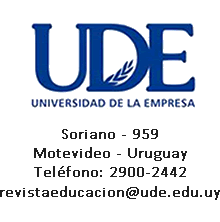Español
DOI:
https://doi.org/10.48163/rseus.2015.4181-95Keywords:
Calidad, Educación, Evaluación PISA, Gestión, Sistemas educativosAbstract
The Programme for International Student Assessment (PISA) of the OECD was created with the aim of assessing 15-year-old students, who are about to complete compulsory education. It measures the degree of knowledge and skills they have gained before inserting themselves into the community, to confront the challenges it poses. A matter of concern is the significant difference found in PISA 2012 between first world countries and the eight (8) participating Latin American countries. As years go by, the difference is greater and if this is not corrected immediately, it will cause greater social inequalities and that it is currently the case in several countries in Latin America. The book Gestión de Sistemas Educativos con Calidad” [Management of Quality Educational Systems], which shows the way forward to attain Educational Quality, gives us some guidance to face the next PISA 2015, 2018… assessments, as it suggests urgent and immediate measures that have to be adopted to improve educational levels. The sustained growth that many Latin American countries showed in the previous decade (2000-2010) through the export of raw materials and their price is coming to an end causing a slowdown and the deterioration of the economy. Therefore, governments have stopped investing in quality education, in science and technology (quality, productivity, and innovation). A good education in math, science and technology would have contributed to diversify
sources of income giving value added to raw materials and their manufacture, with more engineers,
scientists, and technologists, to develop innovations in areas with competitive advantage
Downloads
Published
How to Cite
Issue
Section
License
Política para revistas de acceso abierto
Los autores/as que publiquen en esta revista aceptan las siguientes condiciones:
a. Los autores/as conservan los derechos de autor y ceden a la revista el derecho de la primera publicación, con el trabajo registrado con la licencia de atribución de Creative Commons (CC-BY), que permite a terceros utilizar lo publicado siempre que mencionen la autoría del trabajo y a la primera publicación en esta revista.
b. Los autores/as pueden realizar otros acuerdos contractuales independientes y adicionales para la distribución no exclusiva de la versión del artículo publicado en esta revista (p. ej., incluirlo en un repositorio institucional o publicarlo en un libro) siempre que indiquen claramente que el trabajo se publicó por primera vez en esta revista.






















